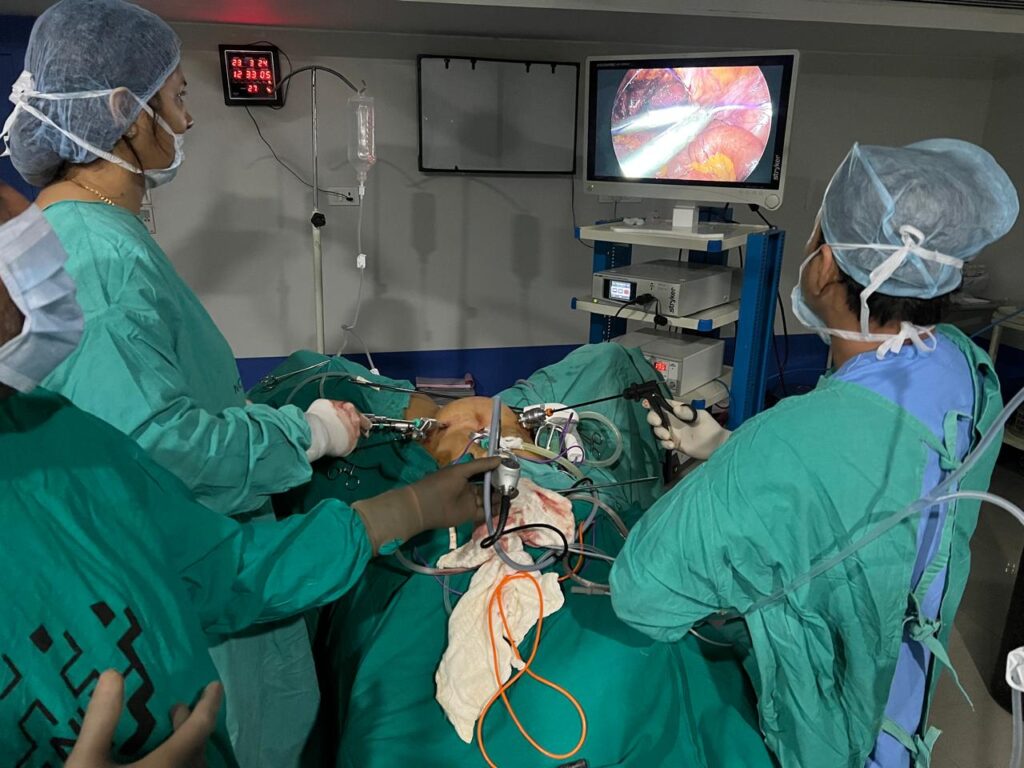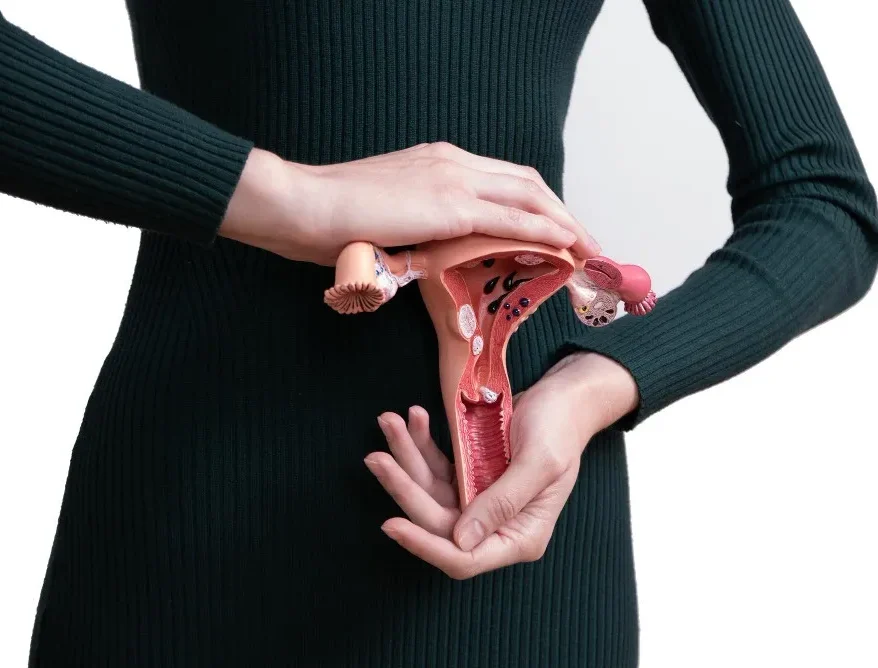Laparoscopy and Hysteroscopy Surgery in Indore
Home » Specialization » Laparoscopy and Hysteroscopy Surgery in Indore
What is Laparoscopy?
Laparoscopy is a minimally invasive surgical technique that allows surgeons to perform operations through small incisions, typically around 0.5 to 1.5 centimeters in size. This approach uses a laparoscope—a thin, flexible tube equipped with a camera and light—to provide a clear view of the internal organs on a monitor. Surgeons insert specialized instruments through additional small incisions to perform the procedure.
Benefits of Laparoscopy
- Reduced Pain: Smaller incisions mean less post-operative pain compared to traditional open surgery.
- Faster Recovery: Patients often experience quicker recovery times and can return to their daily activities sooner.
- Minimal Scarring: The small size of the incisions results in less noticeable scarring.
- Lower Risk of Infection: Fewer and smaller incisions reduce the risk of wound infections.
What is Hysteroscopy?
Hysteroscopy is another minimally invasive procedure used to examine the inside of the uterus. It involves the insertion of a hysteroscope—a thin, lighted tube equipped with a camera—through the vagina and cervix into the uterine cavity. This procedure allows doctors to view and treat conditions within the uterus without needing external incisions.
Benefits of Hysteroscopy
- Direct Visualization: Provides a clear view of the uterine cavity, enabling accurate diagnosis and treatment of uterine conditions.
- Minimally Invasive: Typically performed through the natural openings of the body, reducing the need for cuts and stitches.
- Quick Recovery: Patients usually recover faster and can often return to normal activities shortly after the procedure.
- Effective Treatment: Can be used to remove polyps, fibroids, and other abnormalities directly from the uterine lining.
Indications for Laparoscopy and Hysteroscopy
Laparoscopy
Laparoscopy is commonly used for:
- Diagnostic Exploration: Investigating unexplained abdominal or pelvic pain.
- Gynecological Conditions: Treating endometriosis, ovarian cysts, and fibroids.
- Weight Loss Surgery: Performing bariatric procedures like gastric banding or sleeve gastrectomy.
- Reproductive Health: Addressing issues related to infertility or performing tubal ligation.
Hysteroscopy
Hysteroscopy is typically used for:
- Abnormal Bleeding: Investigating and treating causes of irregular menstrual bleeding.
- Fibroids and Polyps: Removing growths from the uterine lining.
- Intrauterine Devices (IUDs): Removing misplaced or embedded IUDs.
- Post-Menopausal Bleeding: Diagnosing the cause of bleeding after menopause.
Preparing for Laparoscopy and Hysteroscopy
Preparation for both procedures generally involves:
- Pre-Operative Consultation: Discussing the procedure, risks, and benefits with your doctor.
- Medical History Review: Evaluating your medical history to identify any potential risks.
- Diagnostic Tests: Undergoing necessary tests like blood work or imaging studies.
- Fasting: Following specific instructions regarding eating or drinking before the procedure.
What to Expect During the Procedure
Laparoscopy
- Anesthesia: You will receive general anesthesia to ensure you are asleep and pain-free during the procedure.
- Procedure: Small incisions are made in the abdomen, and the laparoscope is inserted along with other surgical instruments. The surgeon performs the required operation while viewing the monitor.
- Duration: The procedure typically lasts between 30 minutes to a few hours, depending on the complexity.
Hysteroscopy
- Anesthesia: Depending on the procedure, you may receive local or general anesthesia.
- Procedure: The hysteroscope is inserted through the vagina and cervix into the uterus. The surgeon examines and treats the uterine cavity while viewing the images on a monitor.
- Duration: The procedure usually takes about 15 to 45 minutes.
Recovery and Aftercare
Laparoscopy
- Post-Operative Care: You may experience some soreness and discomfort, which can be managed with prescribed pain medication.
- Activity: Most patients can resume light activities within a few days, but heavy lifting and strenuous activities should be avoided for a few weeks.
- Follow-Up: Attend follow-up appointments to monitor recovery and address any concerns.
Hysteroscopy
- Post-Operative Care: Mild cramping or spotting may occur, which is usually manageable with over-the-counter pain relief.
- Activity: You can generally return to normal activities within a day or two, although you should follow specific instructions from your doctor.
- Follow-Up: Regular follow-up visits ensure that the treatment was successful and monitor any changes.
Laparoscopy and hysteroscopy represent significant advancements in minimally invasive surgery, offering patients effective and efficient treatment options with reduced recovery times and minimal discomfort. Whether you require laparoscopic surgery in Indore for abdominal issues or hysteroscopy in Indore for uterine conditions, these procedures provide accurate diagnosis and treatment with a focus on patient comfort and quick recovery. For expert care in laparoscopic and hysteroscopic surgery in Indore, consult with a skilled laparoscopic surgeon in Indore to ensure the best possible outcomes and a smooth recovery process.


